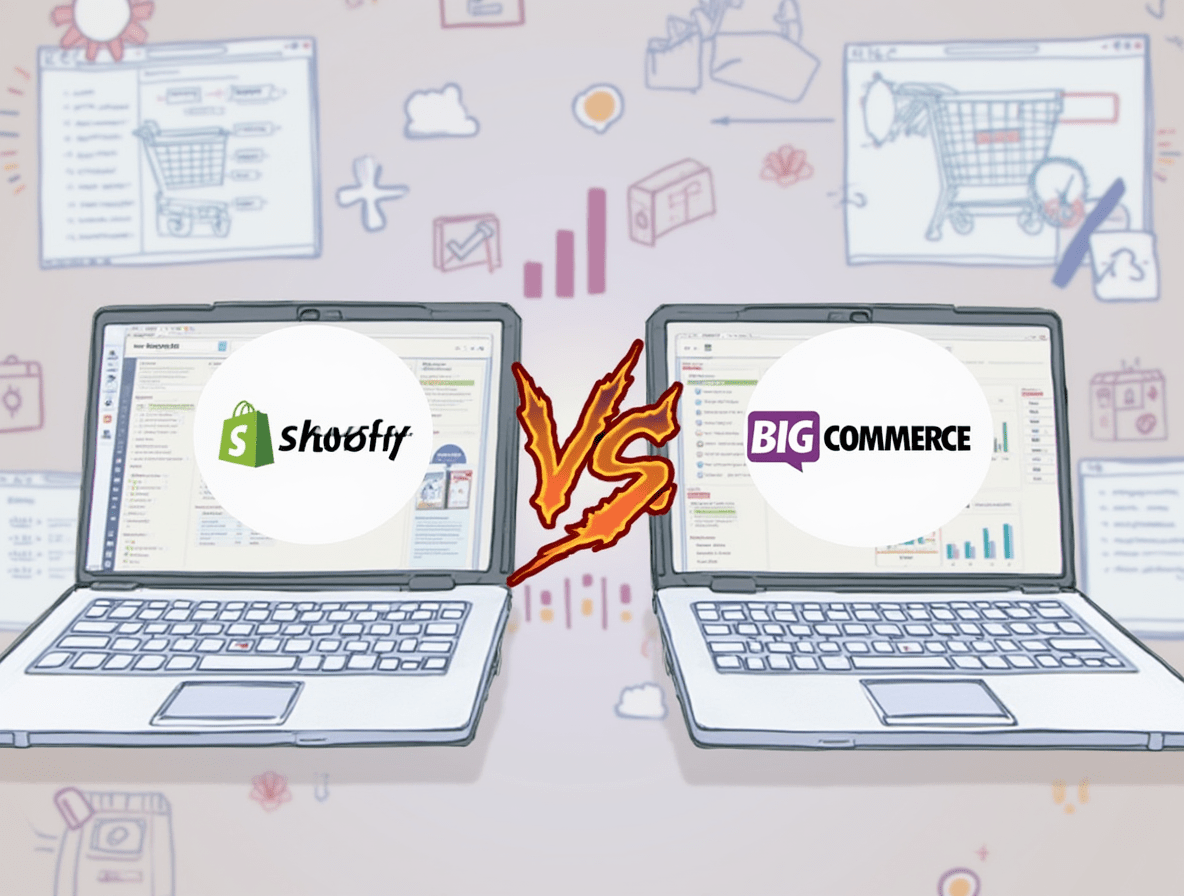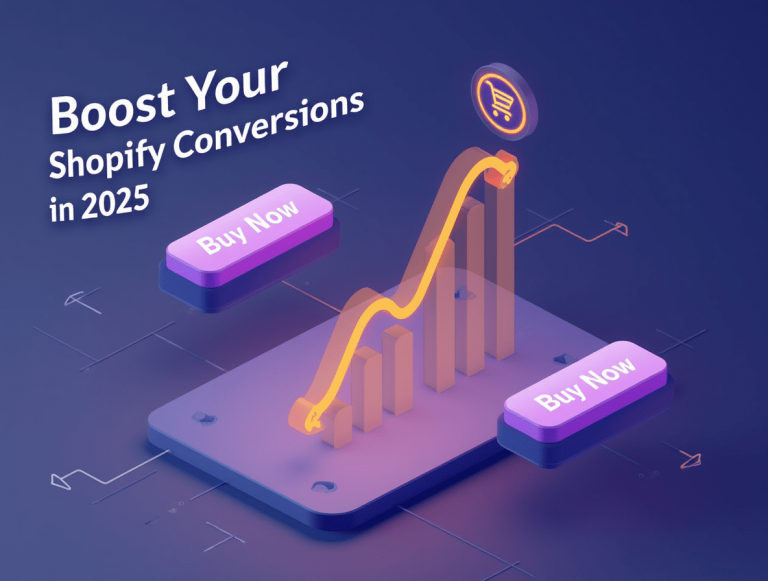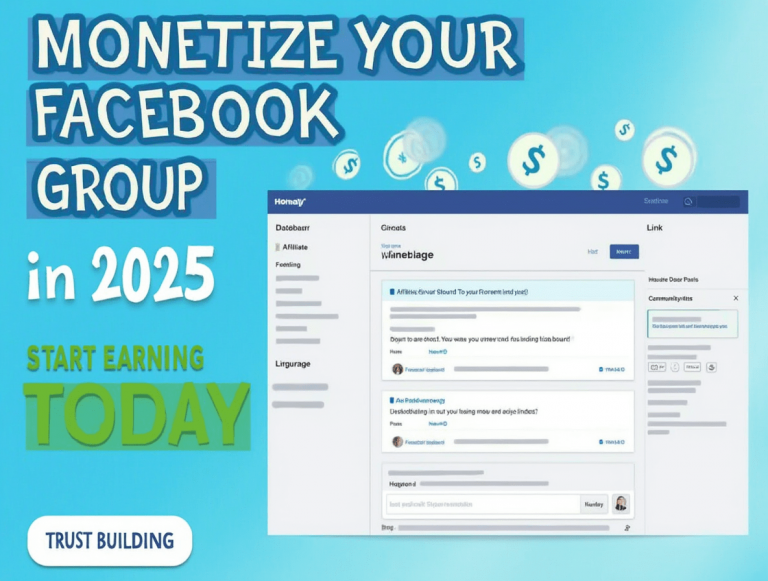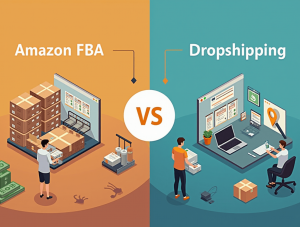
BigCommerce vs. Shopify: Choosing the Perfect Foundation for Your Online Store
In today’s digital economy, selecting the right e-commerce platform can be the difference between thriving and merely surviving online. With global e-commerce sales projected to surpass $6.3 trillion in 2025, the stakes for choosing the optimal platform have never been higher. Among the leading contenders, BigCommerce and Shopify consistently emerge as top considerations—but which truly offers the superior solution for your specific business needs?
This comprehensive analysis delves deep into both platforms’ capabilities, examining everything from core functionality and pricing structures to scalability potential and ecosystem integrations. By understanding how each platform’s strengths align with different business models and growth trajectories, you’ll be equipped to make an informed decision that positions your online store for long-term success.
Pricing and Cost Structure: Understanding Your Investment
BigCommerce Pricing Model
BigCommerce structures its pricing primarily based on annual sales volume:
- Standard Plan: $29.95/month (up to $50,000 in sales)
- Plus Plan: $79.95/month (up to $180,000 in sales)
- Pro Plan: $299.95/month (up to $400,000 in sales)
- Enterprise Plan: Custom pricing (for businesses exceeding $400,000 in sales)
Notable pricing considerations include:
- No transaction fees on any plan (beyond payment processor fees)
- More built-in features in base plans
- Sales threshold limits that require upgrading once exceeded
- Annual billing discounts (10% savings)
Shopify Pricing Model
Shopify structures its pricing based on feature tiers rather than sales volume:
- Basic Plan: $29/month
- Shopify Plan: $79/month
- Advanced Plan: $299/month
- Shopify Plus: Starting around $2,000/month (enterprise-level)
Key pricing factors include:
- Transaction fees when using external payment gateways (0.5% to 2% depending on plan)
- No transaction fees when using Shopify Payments
- No sales volume thresholds forcing upgrades
- Multiple POS options with different pricing structures
- Annual billing discounts (10% for annual, 20% for biennial)
E-commerce consultant Emily Rodriguez notes: “BigCommerce often provides better initial value with more included features, but Shopify’s unlimited sales volumes at each tier can make it more economical for rapidly growing stores. The calculation changes significantly when factoring in app costs, which typically run higher with Shopify due to its more à la carte approach.”
Store Setup and Ease of Use: The Learning Curve
BigCommerce User Experience
BigCommerce offers a robust but more complex initial experience:
- More comprehensive setup wizard with detailed configuration options
- Advanced features accessible directly in the admin panel
- Steeper initial learning curve with more technical terminology
- More settings and configurations available without requiring extensions
- Powerful product option and variant capabilities built into the core platform
The BigCommerce dashboard presents more information upfront, which some users find overwhelming while others appreciate the immediate access to powerful tools.
Shopify User Experience
Shopify prioritizes simplicity and gradual feature discovery:
- Streamlined, intuitive interface with progressive disclosure of options
- Wizard-driven setup with simplified language and clear guidance
- Faster time-to-first-sale for complete beginners
- More features require app installation (increasing complexity over time)
- Simplified product option system with limitations in the core platform
The Shopify approach makes initial store creation more accessible but can introduce complexity later as your store grows and requires additional apps.
According to usability researcher Michael Chen: “Our testing shows new users can typically launch a basic store 30-40% faster with Shopify, but BigCommerce users report higher satisfaction with available features once they’ve climbed the initial learning curve.”
Design and Store Customization
BigCommerce Theme Ecosystem
BigCommerce approaches design with:
- 12 free themes (with multiple style variations)
- 100+ premium themes ($150-$300 range)
- Theme customization through the Stencil framework
- More built-in content management capabilities
- Greater page builder functionality in the core platform
BigCommerce themes typically offer more structural customization options out-of-the-box, but the marketplace offers fewer total options than Shopify.
Shopify Theme Ecosystem
Shopify’s design approach includes:
- 9 free themes (with style variations)
- 100+ premium themes in the official marketplace ($180-$350)
- Thousands of third-party themes from external marketplaces
- The liquid templating system for customization
- Recently enhanced Online Store 2.0 theme architecture
- Simpler visual editor but more limited without apps
Shopify offers more total theme choices but often requires additional apps to achieve the same level of content management flexibility as BigCommerce.
Web designer Thomas Wright explains: “BigCommerce gives developers more direct control over theme structure, while Shopify’s approach is more modular. For non-technical store owners, Shopify’s editor is initially more intuitive, but BigCommerce’s page builder offers more layout flexibility without requiring additional apps.”
Product and Inventory Management
BigCommerce Product Management
BigCommerce excels with:
- Up to 600 variants per product (using up to 250 option values)
- Built-in product filtering and search capabilities
- Native product comparison features
- More extensive built-in product attribute options
- Bulk editing and CSV import/export
- Stronger B2B catalog management features
The BigCommerce approach to product management is particularly advantageous for stores with complex catalogs, customizable products, or B2B requirements.
Shopify Product Management
Shopify handles products with:
- Up to 100 variants per product (using up to 3 options)
- Simpler variant creation interface
- App-dependent advanced filtering and search
- Streamlined product creation workflow
- Built-in CSV import/export
- Recently improved inventory tracking features
Shopify’s product management system prioritizes simplicity for straightforward catalogs but requires apps to match BigCommerce’s capabilities for complex product scenarios.
E-commerce operations specialist Jasmine Taylor notes: “For stores with straightforward products, Shopify’s system is more than adequate and quite user-friendly. Once you exceed about 50 variants or need complex configurability, BigCommerce’s native capabilities start to show significant advantages.”
Payment Processing and Checkout Experience
BigCommerce Payment Ecosystem
BigCommerce offers:
- 65+ pre-integrated payment gateways
- No additional transaction fees beyond processor rates
- Single-page checkout in the core platform
- More checkout customization options without coding
- Built-in real-time shipping quotes from multiple carriers
- Advanced tax calculation tools
The BigCommerce approach gives merchants more flexibility in payment options without financial penalties while providing a robust checkout experience without requiring additional apps.
Shopify Payment Ecosystem
Shopify provides:
- 100+ payment gateway integrations
- Proprietary Shopify Payments with preferential rates
- Transaction fees (0.5%-2%) when using third-party gateways
- Shop Pay accelerated checkout
- Recently improved customizable checkout (limited to Plus plan)
- Integration with multiple buy-now-pay-later services
Shopify’s strongest advantage comes from Shop Pay, which has been shown to increase conversion rates by up to 50% through its streamlined checkout experience.
Payment systems analyst Robert Johnson observes: “Shopify’s ecosystem is designed to strongly incentivize the use of their own payment processing, which offers excellent conversion rates but less flexibility. BigCommerce’s approach prioritizes merchant choice without financial penalties, which particularly benefits international sellers or those with specific payment processing requirements.”
SEO and Marketing Capabilities
BigCommerce SEO Features
BigCommerce provides:
- Automatic generation of SEO-friendly URLs
- Built-in microdata implementation
- Advanced URL redirects management
- Native faceted search that generates optimized URLs
- Built-in Google AMP support
- Customizable robots.txt file
- Server-side 301 redirects
BigCommerce’s approach to SEO tends to be more technically comprehensive out-of-the-box, requiring fewer additional tools to implement advanced optimization.
Shopify SEO Features
Shopify offers:
- Clean, customizable URL structures
- Automatic canonical tags
- Basic robots.txt editing
- Blog functionality in the core platform
- Automatic sitemap generation
- Integration with Google Shopping
- Integration with social selling channels
Shopify provides strong fundamental SEO capabilities but requires apps to match some of BigCommerce’s more advanced features.
SEO consultant Alexandra Peters explains: “From a technical SEO perspective, BigCommerce edges out Shopify with more built-in capabilities, particularly regarding URL structures for product filtering. However, Shopify’s ecosystem makes implementing marketing automation and multichannel selling somewhat more streamlined, especially for merchants leveraging social commerce.”
Scalability and Performance
BigCommerce Scalability
BigCommerce approaches scalability with:
- Unlimited bandwidth on all plans
- No artificial transaction limits (only pricing tier thresholds)
- Enterprise-grade SLA with 99.99% uptime
- Built-in server-side caching
- Google Cloud Platform infrastructure
- API rate limits of 400-700 calls per second
BigCommerce’s architecture is particularly well-suited for handling complex catalogs and high-volume B2B transactions without performance degradation.
Shopify Scalability
Shopify handles scaling with:
- Unlimited bandwidth across all plans
- No transaction limits
- Proprietary infrastructure (not dependent on third-party hosting)
- Built-in CDN through Fastly
- Automatic scaling during traffic spikes
- Higher API limits on advanced plans
Shopify Plus has demonstrated the ability to handle enormous traffic spikes, with notable examples of stores processing thousands of transactions per minute during flash sales.
Performance architect David Williams notes: “Both platforms handle standard e-commerce traffic exceptionally well. The performance differences become noticeable primarily in specific scenarios—Shopify typically edges out for flash sales and extremely high concurrent user counts, while BigCommerce maintains better performance for complex catalog operations and faceted searches on large product databases.”
App Ecosystems and Extensibility
BigCommerce App Marketplace
The BigCommerce ecosystem features:
- 1,000+ apps and integrations
- More functionality in the core platform (requiring fewer apps)
- Stronger API documentation for custom development
- Webhook system for real-time data synchronization
- GraphQL and REST API access
- Headless commerce capabilities
BigCommerce’s approach requires fewer apps for standard functionality but offers a less extensive marketplace for specialized tools.
Shopify App Store
Shopify’s ecosystem includes:
- 6,000+ apps and integrations
- More specialized solutions for specific use cases
- Larger developer community creating new tools
- More template apps for quick implementation
- StoreFront API for headless implementations
- Well-documented Custom App development
Shopify’s more extensive app marketplace offers solutions for virtually any requirement but can lead to “app fatigue” and increased monthly costs as stores add multiple subscriptions.
Integration specialist Marcos Diaz observes: “Shopify’s ecosystem is unmatched in breadth, but this comes with trade-offs—the average Shopify merchant uses 6-8 apps, each adding cost and potential compatibility issues. BigCommerce stores typically run with fewer third-party dependencies, which can mean more predictable performance and lower total cost of ownership.”
Multi-Channel Selling Capabilities
BigCommerce Multi-Channel Features
BigCommerce enables omnichannel selling with:
- Native integration with Amazon, eBay, Walmart, Facebook, and Instagram
- Channel Manager for centralized control
- POS integrations with Square, Clover, and more
- Headless API architecture for custom frontend experiences
- Multi-storefront capabilities for different brands or markets
BigCommerce’s multi-channel approach focuses on core marketplace integrations and B2B capabilities with fewer social commerce options.
Shopify Multi-Channel Capabilities
Shopify’s omnichannel strategy includes:
- Integrated selling on Facebook, Instagram, TikTok, Pinterest, and more
- Amazon, eBay, and Walmart integrations
- Shopify POS with hardware options
- Shopify Markets for cross-border selling
- Social selling features with in-app checkout
Shopify excels particularly in social commerce and providing integrated solutions across multiple consumer touchpoints.
Digital retail strategist Jennifer Wong explains: “Shopify has built a more comprehensive ecosystem for DTC brands focused on social commerce, while BigCommerce offers stronger capabilities for B2B and marketplace-centered strategies. The best choice depends entirely on where your customers prefer to shop.”
Expert Insights: Which Platform Leads in Key Areas?
According to a 2024 survey of e-commerce developers and store operators:
- For built-in features without apps: 78% favored BigCommerce
- For ease of use for beginners: 68% favored Shopify
- For large catalog management: 72% favored BigCommerce
- For conversion-optimized checkout: 63% favored Shopify
- For total cost of ownership: Results varied based on business model
- For development flexibility: 58% favored BigCommerce
- For growth-stage brands: 61% favored Shopify
- For enterprise-level needs: Evenly split between platforms
Who Should Choose Each Platform?
BigCommerce Is Typically Better For:
- Businesses with complex product catalogs or large numbers of SKUs
- Companies requiring detailed product options and variants
- B2B businesses or those with both B2B and B2C sales channels
- Merchants wanting more built-in functionality with fewer apps
- Stores needing advanced SEO capabilities out-of-the-box
- Businesses sensitive to transaction fees or payment gateway restrictions
- Companies with existing technology stacks requiring extensive integration
Shopify Is Typically Better For:
- First-time e-commerce entrepreneurs seeking simplicity
- Direct-to-consumer brands focusing on social commerce
- Businesses prioritizing mobile and in-person selling alongside online
- Companies requiring extensive specialized app functionality
- Brands heavily invested in creating unique shopping experiences
- Merchants comfortable with Shopify Payments as their payment processor
- Businesses requiring the ability to handle extreme traffic spikes
Conclusion: Making Your Decision
The “best” e-commerce platform ultimately depends on your specific business model, technical requirements, growth trajectory, and selling channels. BigCommerce offers a more comprehensive feature set in its core platform with greater built-in flexibility, particularly advantageous for complex catalogs and B2B scenarios. Shopify provides a more approachable onboarding experience with a vast ecosystem of specialized tools, excelling particularly in social commerce and omnichannel retail.
Rather than viewing this decision through the binary lens of which platform is universally “better,” consider which one aligns more closely with your specific requirements and growth strategy. Many successful merchants report that the initial platform selection was less important than their commitment to fully leveraging whichever platform they chose.
Consider starting with a free trial of both platforms, building a test store with your actual products and requirements to experience firsthand how each system handles your specific needs. This practical evaluation, combined with the comprehensive comparison provided here, will guide you toward the platform that best positions your e-commerce business for sustainable success.
Frequently Asked Questions
Is migration between platforms possible if my business outgrows my initial choice? Yes, both platforms offer migration tools, though a full migration typically requires planning and may involve some data restructuring. The complexity depends primarily on your catalog size and the number of customizations in your current store.
Which platform offers better international selling capabilities? Shopify has made significant investments in cross-border commerce with Shopify Markets, while BigCommerce offers strong multi-currency and language capabilities. For businesses primarily selling internationally, Shopify currently offers a more streamlined approach.
How do customer support services compare between platforms? Both platforms offer 24/7 support, but access methods vary by plan level. BigCommerce generally receives higher ratings for technical support depth, while Shopify offers more support channels (including phone support) on lower-tier plans.
Which platform better accommodates dropshipping business models? Shopify has a more developed ecosystem for dropshipping, with numerous apps specifically designed for inventory synchronization and order routing. BigCommerce supports dropshipping effectively but with fewer specialized tools in its marketplace.
How do BigCommerce and Shopify compare for selling digital products? Shopify offers slightly more streamlined digital product handling in its core platform, while BigCommerce typically requires an app for advanced digital delivery features. Both platforms effectively handle mixed catalogs containing both physical and digital products.














